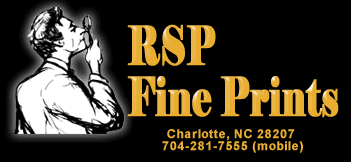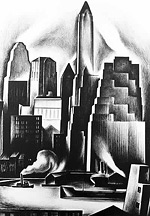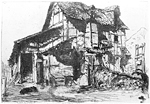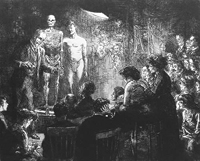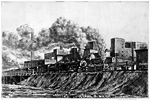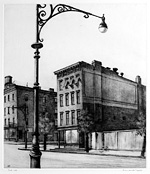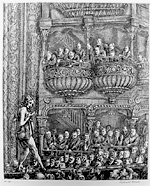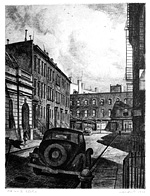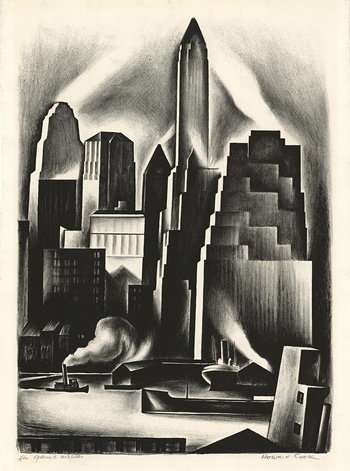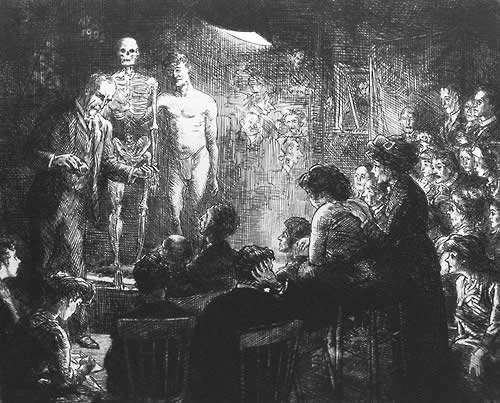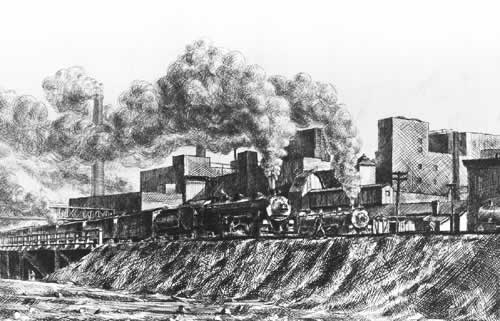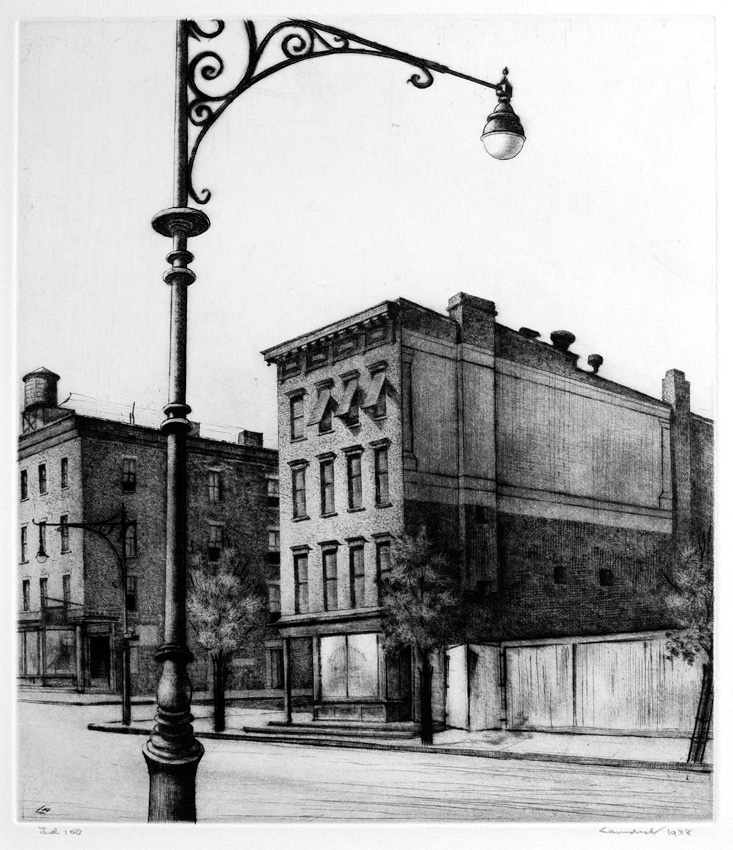Featured American Etchings
(click or tap thumbnail image to see larger image)
John Sloan is one of this century's most well known American artists and master printmakers. He is remembered as a member of "The Eight," a group that was instrumental in the modernization of American art, and whose efforts led to the famous 1913 Armory Show. He was born in Lock Haven, Pennsylvania in 1871. His family soon moved to Philadelphia in 1876. Sloan advanced his art career as free-lance artist specializing in illustration and design. In 1892 he took a full-time job with the art department of the Philadelphia Inquirer. In the fall of 1892 Sloan enrolled in a night class under Thomas Anshutz at the Pennsylvania Academy of the Fine Arts. While in Philadelphia, Sloan became close friends with other artists including Robert Henri, William Glackens, George Luks and Everett Shinn. Sloan moved to New York City in 1904. There he spent the greatest part of his life living and working in or around Greenwich Village and teaching at the Art Students League. Sloan is probably best known for his humanistic views of urban life that he produced in both painting and etching mediums. As the leaders of the Ashcan School of American Art, Henri and Sloan proclaimed that all life was fit subject matter for the artist.
Armin Landeck (1905-1984)
York Avenue Tenements Drypoint. 10 x 9. 1938. Ed.100. Pencil signed, dated and ed. size noted. Kraeft 74. Wove Paper.
Armin Landeck was born on June 4, 1905 in Crandon, Wisconsin. Armin Landeck received his bachelor of architecture degree from Columbia University in 1927. Armin Landeck worked briefly as a draftsman in New York, got married, toured Europe for and returned to New York in the depths of the depression. Unable to find work as an architect, Armin Landeck pursued his artistic talents through printmaking. Armin Landeck became one of America's great printmakers. Armin Landeck's work is executed with eye of an artist and the hand of a master draftsman. Armin Landeck's work presented here page shows the obvious influence of architecture.
Reginald Marsh (1898-1954)
Gaiety Burlesque Etching 11 7/8 x 9 3/4. Only state. 1930. Ed. 39. Pencil signed and inscribed '# 34'. Sasowsky 102. Wove paper.
An urban realist painter of New York City genre, Reginald Marsh devoted his career to depicting people going about their everyday business including Bowery bums, vulgar party goers, and persons elbowing their way in crowded subways. Reginald Marsh was also a printmaker, completing about 236 etchings, lithographs, and engravings, and devoted much time, especially in the 1930s, to printmaking. Many of his paintings were done in watercolor and egg tempera. Reginald Marsh was born in Paris to American-born artist parents, Fred Dana and Alice Randall Marsh. His family settled in Nutley, New Jersey in 1900 and later in New Rochelle, New York. After graduating from Yale University, Reginald Marsh worked as a free-lance illustrator in New York City for the Daily News and The New Yorker and studied at the Art Students League. Reginald Marsh was much influenced by urban realists John Sloan, George Luks and Kenneth Hayes Miller. Reginald Marsh went briefly to Europe and then returned to New York to pursue his sympathetic depiction of low-life subjects. In the 1930s, he did murals for the W.P. A., and in 1943, Reginald Marsh was elected a full Academician to the National Academy of Design.
Armin Landeck (1905-1984)
Bedford Street Etching. 10 1/2 x / 1/8.Second State. 1938. Edition 80. Pencil signed and dated. Inscribed "Ed 100 II State". Printer's chop (Anthony Kirk). Kraeft 68.1. Wove paper.
Armin Landeck was born on June 4, 1905 in Crandon, Wisconsin. Armin Landeck received his bachelor of architecture degree from Columbia University in 1927. Armin Landeck worked briefly as a draftsman in New York, got married, toured Europe for and returned to New York in the depths of the depression. Unable to find work as an architect, Armin Landeck pursued his artistic talents through printmaking. Armin Landeck became one of America's great printmakers. Armin Landeck's work is executed with eye of an artist and the hand of a master draftsman. Armin Landeck's work presented here page shows the obvious influence of architecture.
